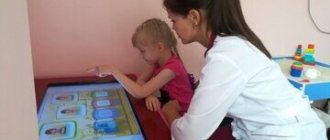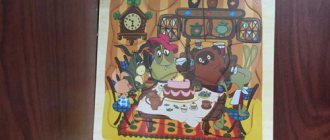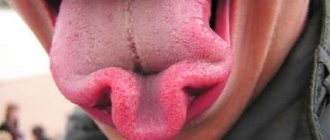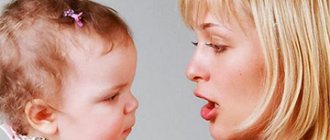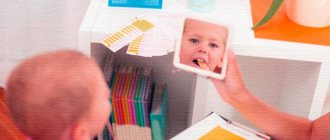Cerebral palsy is a disease that is characterized by typical disturbances in motor activity, as well as delayed development of the psyche and speech functions.
The cause of such disorders is damage to individual brain structures. The more pronounced the defect in the nervous system or areas of the brain, the stronger the functional impairment. Problems with speech formation are present in all variants of the disease. But the presence of full-fledged coherent speech directly affects the social adaptation, mental and intellectual development of the child. Therefore, one of the main tasks to compensate for the condition of cerebral palsy is to work on the development of high-quality speech function.
Causes of cerebral palsy
Cerebral palsy is formed in connection with various functional abnormalities in the brain, which can occur during gestation, during childbirth or the first months of a child’s life. A characteristic feature of the disease is its early manifestation, as well as the absence of further deterioration of the brain. However, of course, without proper care and timely corrective measures, the course of the disease will become more complicated.
The main causes of cerebral palsy are:
- Oxygen starvation (hypoxia) of the fetus.
- Infections suffered by the mother during pregnancy (for example, rubella, cytomegalovirus, toxoplasmosis).
- Complicated heredity.
- Rhesus conflict.
- Asphyxia or injury to the baby as a result of a difficult birth.
- Severe infections, head injury or toxic poisoning suffered at an early age.
Double hemiplegia Spastic tetraplegia
One of the most severe forms of cerebral palsy, which is a consequence of brain damage due to intrauterine chronic fetal hypoxia. The cerebral hemispheres or the entire brain are affected. Spastic quadriplegia (quadriparesis, since both the upper and lower limbs are equally severely affected) is diagnosed clinically. Characteristic deformation of the trunk and limbs. In almost half of the cases, movement disorders are accompanied by strabismus, atrophy of the optic nerves, and hearing impairment. pseudobulbar syndrome, epileptic seizures are observed. Such patients subsequently cannot learn to sit, stand and walk; hand defects and lack of motivation exclude self-care and work activity. On the mental side, severe debility, imbecility, and idiocy are noted.
Symptoms of cerebral palsy
The main and most typical symptoms of this disease include:
- Tension or, conversely, relaxation of muscles due to impaired tone.
- Uncontrolled paradoxical movements of the limbs - unexpected, sudden or slow.
- Skeletal deformities.
- Problems with vision or hearing.
- Impaired swallowing function due to improper muscle function.
- Delay (at different levels) of both speech development and intellectual and mental abilities.
- Cramps.
Not all children diagnosed with cerebral palsy have all of these symptoms. However, to a certain extent, many of them are present and require correction in order to help the child adapt in life.
WORK ON SPEECH DEVELOPMENT
When working on speech production, proper breathing is important. It is improved with simple exercises (inflating balloons, using whistles, blowing out a candle).
Good results in speech correction are shown by reading fairy tales and poems aloud. Sound pronunciation by imitation of different sounds, isolated repetition of each of them.
Speech therapy assistance should be gradual and daily, only then will it give visible results.
It is very important that parents participate in this process, who can consolidate the specialist’s results and increase them, as well as adapt their children to the environment as much as possible.
Speech dysfunction in cerebral palsy
A large percentage of children diagnosed with cerebral palsy have disorders in speech formation. More often they do not act “alone”, at times they even combine with each other.
Main speech disorders in cerebral palsy:
- SRD—speech development delay.
- ZPRD - delayed psycho-speech development
- Dysarthria is incorrect sound pronunciation.
- Alalia is an absolute absence or delay in speech formation.
Speech disorders and developmental delays depend on the degree of brain damage, as well as delays in the formation of parts of the brain that coordinate speech activity. The child’s condition itself limits communication, gaining knowledge about the environment and skills in everyday activities, which, unfortunately, entails falling behind peers. The more important it becomes to take corrective measures that would help the child’s development from an early age and improve his ability to adapt to society.
An overly caring family upbringing also does a disservice, when parents anticipate the child’s wishes in everything, responding to his slightest gestures and instructions, without stimulating him to correctly form speech.
In the Russian Federation, over the past 25 years, there has been a 1.9-fold increase in the incidence rate of nervous diseases in childhood. Currently, there are more than 170 thousand children living in the country with disabilities due to cognitive impairment (including speech disorders, mental retardation, etc.), which is 33% of the total number of disabled children [1, 2]. In 60% of cases, childhood neurological disability is associated with pathology of the perinatal period, and 24% are patients with cerebral palsy (CP) [1, 3, 4].
Cerebral palsy is a polyetiological disease of the central nervous system, which occurs as a result of damage that occurs in the prenatal, intranatal and early postnatal periods, or as a result of an abnormality in brain development. The effect of various damaging factors on the developing brain determines the variety of combinations of motor and sensory disorders, as well as impairment of mental functions [3, 4]. The incidence of cerebral palsy in the world is in the range of 1.8-5.0 (on average 2.5) per 1 thousand children. In Moscow this figure is 1.9 [4-8].
Speech disorder in cerebral palsy, according to various authors [9–12], affects 32–87% of patients. Pathology of pre-speech development is observed in 73-100% of patients. Pronunciation disorders were noted in 2/3 of patients with cerebral palsy, a decrease in vocabulary - in 84%, and violations of intonation expressiveness of speech - in 93%. The prevalence of speech disorders in patients with cerebral palsy decreases slightly as they grow older: at the age of 0-3 years it is 100%; at the age of 3-7 years - 98%; 7-17 years old - 95%, over 17 years old - 83% and by 32 years old it may decrease even more [12].
The main syndromes of speech disorders in patients with cerebral palsy are: dysarthria (58%), stuttering (18%), alalia (5%), rhinolalia (3%), dysgraphia (2%), dyslexia (1%) [12]. In males, speech disorders with cerebral palsy are somewhat more common (56.2%) than in females (43.8%) [12].
Features of speech disorders in cerebral palsy are determined by: 1) localization and severity of brain damage; 2) underdevelopment or later formation of those parts of the cortex that are of utmost importance in speech and mental activity; 3) the degree of preservation of kinesthetic, visual and auditory perception; 4) the state of the peripheral speech apparatus; 5) the state of intellectual-mnestic functions that ensure the child’s need for communication; 6) adequacy of the speech and emotional environment; 7) features of the child’s personal development [13-21].
The main clinical features of speech disorders in cerebral palsy are that oral speech disorders in patients depend on the state of the motor sphere; in addition, there is a close connection between speech pathology and sensory disorders and intellectual impairments [20, 22-24].
As is known, the pathogenetic commonality of motor and speech disorders in cerebral palsy is due to the anatomical proximity in the location of the cortical speech and motor zones, pathways (since the motor component of speech is realized by areas in the lower part of the precentral gyrus, next to the areas providing motor skills of the hand, upper limbs, trunk, and Broca's area, which regulates the temporal organization of speech functions, is closely adjacent to the premotor area and field 6, which implement similar processes in relation to motor functions), in addition, the subcortical nodes and their connections, the structures of the midbrain, brainstem and cerebellum are also involved in the organization both motor acts and speech processes, which determines, when they are damaged, the combination of violations of motor and speech functions. The functional commonality of the speech and motor systems is also noted, since the organization of any speech and motor act requires the preservation of a clear kinesthetic perception, which accompanies any movement of both articulatory and other muscles [12, 25-29].
The most common speech impairment with cerebral palsy is dysarthria, and its frequency depends on the form of the disease: with hemiparetic form - 17.8% of patients, atonic-astatic form - 21%, spastic diplegia - 23.8%, hyperkinetic form - 76 %, double hemiplegia - 84% [29].
General criteria for diagnosing dysarthria in cerebral palsy are: disturbances in sound pronunciation and difficulty in automating delivered sounds, the presence of synkinesis (movement of the lower jaw when the tongue moves upward, movements of the fingers when the tongue moves); slow pace of articulatory movements; difficulty in switching articulatory movements; the presence of prosodic violations; voice disorders and melodic-intonation disorders [20, 27].
The leading feature of dysarthria in cerebral palsy is the dependence on the state of the motor sphere; in this regard, the type of dysarthria is determined by the form of cerebral palsy (spastic, hyperkinetic, atonic-astatic) and the corresponding motor defects of the speech apparatus (spastic paresis, rigidity, hyperkinesis, ataxia, apraxia) [20 , 27-29].
Based on the form of speech motor defect in cerebral palsy, the following forms of dysarthria are distinguished: spastic-paretic, spastic-rigid, hyperkinetic, ataxic, ataxic-hyperkinetic, spastic-hyperkinetic, spastic-atactic, spastic-atactic-hyperkinetic [20].
The classification of dysarthria according to the degree of speech intelligibility determines 4 degrees of severity of dysarthria: 1) violations of sound pronunciation are detected only by a specialist during the examination of the child; 2) pronunciation disorders are noticeable to everyone, but speech is understandable to others; 3) speech is understandable only to those close to the child; 4) speech is absent or incomprehensible even to the child’s loved ones (anarthria) [20].
According to one of the classifications for cerebral palsy, depending on the location of the brain lesion, pseudobulbar (21%), bulbar (4%), cortical (1%), cerebellar (2%), subcortical (3%), combined (9%) and erased are distinguished. (18%) forms [12], according to another - pseudobulbar, extrapyramidal, cerebellar [27]. The clinical features of the pseudobulbar form of dysarthria are the following: increased muscle tone in the articulatory muscles according to the type of spasticity; limitation of active movements of the muscles of the articulatory apparatus, preservation of reflex automatic movements, strengthening of the pharyngeal and palatal reflexes; the presence of synkinesis; tension of the tongue, its retraction backwards, its back is rounded and closes the entrance to the pharynx, the tip of the tongue is not pronounced, voluntary movements of the tongue are limited; characterized by a violation of the pronunciation of the most complex articulation of the anterior lingual sounds, a combination of distortion of pronunciation with disturbances in breathing, voice, intonation and melodic aspects of speech, often with drooling [27]. The extrapyramidal form of dysarthria is characterized by: changes in muscle tone in the speech muscles; the presence of violent movements (hyperkinesis); disturbances of proprioceptive afferentation from the speech muscles, disturbances of emotional-motor innervation; the range of movements in the muscles of the articulatory apparatus may be sufficient; the absence of stable and uniform violations of sound pronunciation, as well as great difficulty in automating sounds [27]. In the cerebellar form of dysarthria with cerebral palsy, the following features are noted: speech is slow, jerky, scanned, tongue movements are inaccurate, with manifestations of hyper- and hypometria, decreased tone in the muscles of the tongue and lips, the tongue is thin, spread out in the oral cavity, its mobility is limited, the pace of movements slowed down, fine trembling of the tongue with more subtle, purposeful movements, the soft palate sags, nasalization of most sounds is pronounced [27].
In patients with cerebral palsy with dysarthria and anarthria, in addition to motor disorders, additional defects such as apraxia (articulatory, phonatory, respiratory), as well as disorders of phonemic analysis of words are often observed [30-35].
The main forms of speech sound disorder in cerebral palsy are: 1st form - phonetic disorder, manifested in distortion of sounds, but with the preservation of all differential phonemic features of sounds; 2nd form - phonetic-apraxic disorder, including both phonetic disorders (distortions of sounds) and articulatory apraxia, expressed in the replacement and omission of sounds; The 3rd form is a phonetic-phonemic disorder with the phenomena of articulatory apraxia (in addition to distortions of sounds, there are multiple substitutions, omissions of sounds, violations of the syllabic structure of words, incorrect grammatical use of phonemes at the end of words) [20].
According to research results, in cerebral palsy there is a pronounced slowdown in the development of phrasal speech, which is determined by the form of the disease [29]. It has been shown that in the hemiparetic form, 2/3 of patients developed phrasal speech by the age of 7; only 17.8% subsequently developed dysarthria [29]. In spastic diplegia, the pronunciation of phrases in 42.9% of cases occurred at the age of 3-7 years, dysarthria was detected in 23.8% of patients. Patients with the hyperkinetic form mastered phrases by the age of 10 years and older only in 30% of cases, dysarthria was noted in 70%, and anarthria in 16.7%. In the atonic-astatic form, 25% of patients mastered phrasal speech by the age of 7, dysarthria developed in 21% of patients, anarthria in 31.6% of patients. With double hemiplegia, only 7% of patients had primitive phrasal speech by 10 years of age, in 30.2% pronunciation was complicated by dysarthria, and in 3.5% anarthria was observed [29].
The most important feature of speech disorders in cerebral palsy is the close connection of speech pathology with sensory disorders and impairments in the intellectual sphere [36–41]. In 6-23% of patients with cerebral palsy, hearing may deteriorate (in the hyperkinetic form, the frequency of this pathology can reach 60%), which is one of the leading causes of delayed speech development, and in severe cases - general underdevelopment of speech, and in the future these children experience difficulties when teaching reading and writing [13, 36, 42—44]. Particularly characteristic is a decrease in hearing for high-frequency tones and preservation for low-frequency ones [9, 36]. Many children have phonemic hearing impairments (they cannot distinguish sounds and sound combinations that sound similar), insufficient auditory perception and auditory memory [9, 13, 19, 45].
In various forms of cerebral palsy, specific features of the combination of mental and speech development delays are also noted [9, 10, 15, 19]. For example, in the hyperkinetic form there is a lack of development of verbal thinking, which is pathogenetically associated with frequent auditory and hearing-speech disorders [9, 10, 15]. In the hemiparetic form of cerebral palsy, the clinical picture largely depends on the localization of the lesion in one or another hemisphere of the brain: with right-sided hemiplegia (when the predominant left hemisphere suffers, which, as is known, is responsible for the implementation of speech functions), speech disorders are observed 3 times more often than with left-sided hemiplegia. . In left-sided hemiplegia, speech impairments are observed in the structure of Gerstmann-Schilder syndrome, which is characterized by mirror drawing and writing (optical-spatial agraphia), finger agnosia, disturbances in body schema and counting [9, 10, 15].
In one of the studies [26], when studying the relationship between the severity of the motor defect, cognitive impairment, and speech disorders in 36 children with cerebral palsy aged 2 to 9 years, it was revealed that 14% of children had intelligence scores below 70, while the vast majority suffered from dysarthria and impairments in understanding speech, and 62% of children had an IQ level above 70, which was accompanied by speech impairments in only half of them. Other studies [19, 45] found that in patients with cerebral palsy, reading and phonemic literacy disorders correlate with a decrease in intellectual development indicators, while a decrease in auditory perception is an early predictor of disorders. It has also been shown [41, 45] that children with cerebral palsy and speech impairments are at risk for reading and literacy disorders. At the same time, studies of the communication capabilities of preschool children with cerebral palsy [33] showed that they do not depend on the severity of the dysarthric disorder, but are associated with the characteristics of the patients’ personal development (adequacy of self-esteem and attitude towards their defect, focus on interpersonal interaction).
The basic principles of correctional and speech therapy work in patients with cerebral palsy were determined [18, 20, 21, 24, 32, 37]: 1. Early start of correctional, educational and speech therapy work. 2. Individual approach, taking into account the form of cerebral palsy and the degree of hearing loss. 3. Compliance of the work with the level of development of the child with a gradual complication of techniques aimed at the formation and correction of mental functions, with special attention being paid to the intensity of development of intact functions. 4. Strengthening the motivation of speech activity with the creation of situations that promote awareness of the role of speech when performing cognitive, practical or gaming activities. 5. Intensification of speech communication, formation of the need for communication, provision of speech practice, which will serve as a source of vocabulary accumulation, mastery of phonetic and grammatical norms of the language. 6. Visualization of learning, using bright visual teaching aids, computer simulators, bright educational toys. 7. Systematic and comprehensive treatment with the development of kinesthetic perception, manipulative activities, based on the correction of motor and sensory disorders, relying on intact analyzers. 8. In children suffering from hearing loss, it is necessary to use technical training aids (individual hearing aids, earbuds, headphones, etc.), which helps train the child’s residual hearing, develops auditory perception, enriching the child’s understanding of the world around him.
The listed principles correspond to the following main tasks of correctional and speech therapy work for cerebral palsy [21, 28, 32, 33, 43]:
1. Reducing the degree of manifestation of motor defects of the speech apparatus: spastic paresis, hyperkinesis, ataxia.
2. Development of speech breathing and voice (formation of duration, sonority, voice control in the speech stream, development of synchronicity of voice, breathing and articulation).
3. Normalization of the prosodic system of speech (melodic-intonation and tempo-rhythmic characteristics of speech).
4. Formation of articulatory praxis at the stage of formulation, automation and differentiation of speech sounds, correction of pronunciation disorders.
5. Development of phonemic perception and sound analysis.
6. Development of the functional capabilities of the hands and fingers.
7. Normalization of lexical and grammatical skills of expressive speech.
According to the standards of medical care for children with cerebral palsy1, the average frequency of speech therapy assistance both in the clinic and in the hospital is 0.8, with the frequency of its provision during diagnosis - 1 session, and during correction - 6 sessions.
Correctional pedagogical and speech therapy work for speech disorders in patients with cerebral palsy includes the following areas [4, 20, 29, 32, 46]:
1. Differentiated speech therapy massage: relaxing or stimulating massage of articulatory muscles, probe massage, acupressure; tongue massage (finger, probe, spatula, brush); massage to suppress hyperkinesis (cross acupressure in the area of the lips and nasolabial folds, cross sub- and patello-labial massage), with elements of physical therapy, with the massage preceded by shaking the child’s arm and contralateral leg, bringing them together in the knee and elbow area.
2. Articulation gymnastics (passive and active).
3. Breathing and voice exercises.
4. Exercises aimed at overcoming motor impairment (especially hand motor skills).
5. Combined correction of speech and other higher mental functions.
Physiotherapy methods are actively used in the complex correction of speech disorders, such as artificial local contrastothermia (a combination of hypo- and hyperthermia); acupuncture, microcurrent reflexology; paraffin therapy, mud applications; transcranial electromagnetic stimulation; chivamat therapy; electrical stimulation [32, 47].
One of the modern and most promising physiotherapeutic techniques is electromyostimulation using the vocaSTIM device, and the technique consists of combining voluntary contractions of the laryngeal muscles (when performing phonopedic and articulatory exercises) with the simultaneous inclusion of electrical stimulation. Another effective method used for non-drug correction of speech disorders is chivamat therapy (deep oscillation method - a type of vibration massage), based on exposure to an alternating electrostatic field. The main indications for the use of this method are speech disorders, disorders of muscle tone and/or contractility (with cerebral palsy, stroke, traumatic brain and spinal injuries, etc.), pain syndrome, and venous circulation disorders. As a result of use, muscle tone is normalized (anti-spastic effect), blood circulation is improved, and anti-inflammatory, decongestant and trophic effects are exerted.
A significant place in the correction of speech development disorders in children is occupied by peptidergic nootropic drugs, in particular the domestic drug “Cortexin” [48-51]. This drug contains a complex of water-soluble polypeptide fractions with a molecular weight of no more than 10,000 Da, as well as a number of amino acids, vitamins and minerals and easily penetrates the blood-brain barrier, exerting a multimodal tissue-specific effect on the central nervous system. Studies have proven the neuroprotective effect of the drug - influence on the cascade regulation of apoptosis, prevention of the formation of free radicals and lipid peroxidation products, restoration of ATP levels in mitochondria [48]. In the treatment of speech disorders in children with diseases of the central nervous system, the most important aspects of its action are its positive effect on the mechanisms of neuroplasticity and neuroreparation (activates neuronal peptides and neurotrophic factors; optimizes the balance of metabolism of excitatory and inhibitory amino acids, dopamine, serotonin; has a GABAergic effect; promotes improvement bioelectric activity of the brain) [48, 49]. The results of numerous studies indicate the high effectiveness of cortexin in the complex rehabilitation of speech disorders in children, which is due to its direct effect on the metabolism of nerve cells, normalization of cerebral and systemic circulation, and reduction in the manifestations of convulsive syndrome [52-54].
Extensive experience with the use of Cortexin in the rehabilitation of children in the first years of life with consequences of perinatal central nervous system damage indicated a significant improvement in motor and cognitive functions, as well as pre-speech and speech development [51, 52]. A study of the effectiveness of rehabilitation treatment using cortexin in 67 children aged 3 months to 3 years with developmental disorders of psychoneurological functions of perinatal origin revealed a significantly more intense formation of the functions of visual, auditory perception, impressive speech, and communication functions than in treatment without cortexin [52] .
When analyzing the effectiveness of using Cortexin (course of 10 days, 10 mg daily) in 20 children aged 5-6 years suffering from specific expressive speech disorders, more pronounced positive dynamics were noted compared to children (control group of 20 people) receiving vascular and vitamin therapy . When studying various types of memory and attention in children receiving Cortexin, a statistically more significant improvement in the studied parameters was revealed than in the control group [53].
When using Cortexin in 48 children with specific speech disorders, a positive result (in the form of improved speech activity, understanding of addressed speech, a decrease in the number of grammatical errors, asthenic manifestations, as well as increased attention and perseverance) was noted in 62.5% of patients suffering from expressive and speech disorders. impressive-receptive speech, but no significant improvement in sound pronunciation was observed. In the subgroup with developmental disorders of predominantly expressive speech, positive dynamics were noted in 65.5% of cases (in the form of increased activity in the use of vocabulary, improved grammatical structure of speech, and an increase in the number of syllables in repeated phrases). In the subgroup with a specific articulation disorder, an improvement in speech activity was observed in 66.7% of children. In addition to improving speech function, positive dynamics of such comorbid conditions as attention deficit, hyperactivity, tics, and enuresis were revealed. EEG data indicated an increase in the power of the α rhythm in the parieto-occipital leads and a decrease in the power of θ-band oscillations in the projection of the central frontal cortex [54].
Cortexin is included in clinical guidelines [55] and standards of medical care for children with cerebral palsy1. The results of relevant studies [56-59] indicate the high effectiveness of the use of cortexin in restoring speech functions in children with cerebral palsy. During the observation of 25 children with cerebral palsy aged 6-15 years, it was revealed that with the use of Cortexin (5 courses of 10 injections at intervals of 3 months), the volume of motor activity and the range of motor skills significantly increased, hand-eye coordination improved, and the the sleep-wake cycle, the emotional background improved, and disorders of the articulatory apparatus decreased. A cumulative effect of the drug was revealed [5]: with repeated courses of therapy, its positive effect persisted for 6 to 18 months.
T.A. Ukhanova et al. [59] analyzed the results of treatment of speech disorders in patients with cerebral palsy with Cortexin in combination with reflexology. 78 children with cerebral palsy aged 2 to 7 years received treatment on an outpatient basis. All children with cerebral palsy had speech disorders of varying severity: from severe psycho-speech defects to asynergy of the muscles of the speech apparatus. For treatment, courses of microcurrent reflexology (MCRT) were used according to the author's method in combination with a course of Cortexin. The 1st (main) group included 40 patients who received treatment with MPRT in combination with Cortexin; Group 2 (control) included 38 patients receiving only MPRT. Treatment with Cortexin was carried out in courses of 10 injections after completion of the 1st and 3rd courses of MPRT, the patients' condition was assessed before the start of treatment and at the end of the 6-month treatment program. Analysis of the results of complex treatment combining MTRT with cortexin showed its high effectiveness in restoring speech functions in children with cerebral palsy compared to the comparison group. In patients with spastic diplegia, the decrease in the degree of speech underdevelopment after treatment in the main group was 81%, in the control group - 70%, and in patients with atonic-astatic form of cerebral palsy - 72 and 61%, respectively. Moreover, after the use of reflexology in patients with cerebral palsy, there was a predominant improvement in speech by only 1 order of magnitude, while during rehabilitation using Cortexin, a more pronounced improvement of speech by 2 orders of magnitude was noted in 64% of patients with spastic diplegia and 25% of patients with the atonic-astatic form of cerebral palsy (in the control group in 30 and 0%, respectively).
V.A. Isanov and M.F. Ismagilov [56] conducted a comparative study of the effect of cortexin in combination with kinesiotherapy on impaired motor and cognitive functions in 118 patients with cerebral palsy aged 1 to 18 years. 73 patients in the main group underwent rehabilitation using kinesiotherapy in combination with treatment with Cortexin, and 45 patients in the control group received kinesiotherapy only. A significant positive effect of cortexin was noted at the end of the 2-month course of treatment, manifested in an improvement in both motor capabilities and indicators of cognitive activity (auditory-verbal memory, attention, object-related activity).
Since it is known that not only motor, but also sensory pathology in children with cerebral palsy is a significant factor underlying disorders in the formation of speech functions, taking into account the critical role of multisensory disafferentation in the genesis of cognitive disorders in cerebral palsy opens up broad opportunities in the development of new, pathogenetically oriented methods of rehabilitation [45, 60]. In complex rehabilitation treatment for patients with cerebral palsy, the method of dynamic proprioceptive correction (DPCC) is widely used, which is based on the strengthening and normalization of impaired sensory flow with a change in the interaction of sensory systems (proprioceptive, visual, vestibular) and improvement of not only motor, but also cognitive, in including speech functions [4, 5, 61-63]. It was shown that after several courses of MDPC, the frequency of dysarthria in patients with spastic diplegia decreased: mild - from 18.2 to 6.4% (2.8 times), moderate - from 20.9 to 6.4% (3.8 times). 3 times), severe - from 40.9 to 15.5% (2.4 times), and in the hyperkinetic form: mild - from 28.3 to 17.4% (1.6 times), moderate - from 45.7 to 21.7% (2.1 times), severe - from 37 to 8.7% (4.3 times) [4].
Thus, early diagnosis of speech disorders in cerebral palsy and timely comprehensive rehabilitation can significantly compensate for speech impairments and significantly reduce the degree of disability, which contributes to more successful social adaptation and effective social integration of patients with cerebral palsy.
The author declares no conflict of interest.
Information about authors
About the author:
Nemkova S.A.
— e-mail; https://orcid.org/0000-0002-9679-9640
Corresponding author:
Nemkova Svetlana Aleksandrovna - e-mail; https://orcid.org/0000-0002-9679-9640
Order of the Ministry of Health of Russia dated June 16, 2015 No. 349n “On approval of the standard of specialized medical care for cerebral palsy.”
Treatment of cerebral palsy
In the treatment of cerebral palsy, complex therapy should be used. Medicines are used (to improve blood circulation in the brain, vascular, muscle relaxants, amino acids and vitamin complexes), therapeutic massage, physiotherapy, orthopedic and dynamic correction. However, in addition to restoring physiological functions, it is important to pay great attention to mental and speech development.
Here the main role is given to psychologists, neurologists and speech pathologists. The most important point in correction is to start as early as possible. The human brain develops very actively and is capable of delegating some of the work that the affected areas cannot do to other departments. This means that the child’s condition can be compensated for and adapted for life in society.
OUR PROGRAM
At the Medical School, a whole range of activities have been developed for the correction and development of speech, complementing each other. The complex includes: the work of professional speech therapists and speech pathologists; Tomatis technique, which is aimed at speech correction using special programs and allows you to achieve good results twice as fast; BAC (bioacoustic correction) procedure, which improves mental activity, perception, attention. Acupuncture aimed at reducing salivation and stimulating points responsible for speech. Also in our center there is a procedure performed by a Chinese specialist - facial qigong, which uses various techniques aimed at correcting speech disorders in cerebral palsy, such as swallowing, chewing, relaxing spasmodic facial muscles, and the emergence of new sounds. Our statistics confirm good results in 95% of patients.
The medical clinic accepts patients from all regions of the country: Moscow, St. Petersburg, Yekaterinburg, Chelyabinsk, Novosibirsk, Ufa, Kazan and others.
Areas of work of a speech therapist
Speech therapy work for cerebral palsy takes place in the following areas:
- Gymnastics to correct disorders of the articulation apparatus;
- Massage that activates the work of speech centers;
- Probe massage;
- Encouraging the patient to talk;
- Expansion of the child’s active and passive vocabulary;
- Mastering the rules of grammar;
- Mastering normal pronunciation of sounds;
- Work on the child’s ability to concentrate attention and perceive the world around him;
- Correction of chewing and swallowing skills and control of saliva.
Correction of speech dysfunctions
Work on communicative speech is built from several successive stages. An adaptation strategy is developed based on the characteristics and symptoms of the disease and the level of damage to the speech center.
Areas of work of a speech pathologist-defectologist:
- Improving the functioning of the articulatory apparatus, speech therapy exercises, special massage courses;
- Activation of auditory attention in a child;
- Stimulation of the vocal reaction (vocalization of exhalation, formation of a “revival complex”, creation of conditions for the desire to communicate in the child himself);
- Work on motor reactions.
- Increasing not only passive, but also active vocabulary, improving conceptual functions, familiarization with the grammatical structure of phrases;
- Improving the formation of coherent speech.
To achieve effective work on speech development in a child with cerebral palsy, a speech therapist must collaborate with other specialists - a psychologist and a neurologist, focusing on treatment tactics. At the beginning, it is necessary to determine the specific speech therapy level of the child and develop a rehabilitation action plan. The work of a speech pathologist-defectologist is always individualized, since children with cerebral palsy may have completely different levels of speech development and accompanying dysfunctions. Therefore, the lesson plan is based on the child’s condition and the level of impairment of nervous and brain activity.
A problem that complicates the process of speech correction in children with cerebral palsy is the rather late start of taking rehabilitation measures. Specialists are able to diagnose abnormalities in brain function before the age of one year, but in most cases, speech therapy work is postponed until 4-5 years. During this time, the brain already adapts to the current conditions, and the child develops some pedagogical lag. The sooner correction classes begin, the higher the chance of achieving the necessary adaptation of the child.
Slippery moments of speech therapy diagnostics
One of the slippery aspects of speech therapy diagnosis of a child with cerebral palsy is the fact that often a specialist, without looking closely, shoots out a diagnosis of dysarthria, famously determines its form and begins to work on muscle function. Cerebral palsy, dysarthria by default. Yes, she is. But if a child involuntarily pronounces a sufficiently large volume of sounds, is involuntarily capable of quite complex articulatory movements, and may even be able to reproduce them by imitation, chews and swallows, then it is unlikely that the reason for his silence is dysarthria, and he is so clearly shown an endless probe massage.
Unfortunately, the specialist does not always have a clear understanding of the most pressing task for a given child. For example, in my practice there was a wonderful, smart six-year-old girl with perfectly developed speech as a result of the efforts of speech therapists and parents, but with residual defects in the pronunciation of L and R. These defects were obvious, and my mother was worried, but at that time I was much more worried about something else - my hands girls.
The hand was absolutely not ready for writing, plus there were spatial orientation problems typical for children with cerebral palsy, which, if not eliminated in time, would be guaranteed to lead to impairments in written speech - dyslexia and dysgraphia. And the sounds - yes, it would be possible to spend time on their production and automation, but I was aware that with dysarthria this work would drag on for months and, possibly, years. And the deadlines are running out - school is approaching, the child’s speech is absolutely intelligible and understandable, with such speech many healthy people live and feel great.
Therefore, hand and letter were on the agenda, there was a lot of work there, and we started it. But my mother continued to worry, and it ended with the fact that they stopped coming to me. But, almost two years later, they returned when the girl’s problems at school became completely obvious, and another speech therapist took the easy path and worked on staging these remaining sounds.
Apraxia: actively babbles something, but does not repeat or imitate
If in a child we have identified only a limitation in the mobility of the articulatory apparatus, a violation of muscle tone, the measures described above may be sufficient to initiate speech, but if we see apraxia - a violation of the voluntary organization of movements, then targeted classes are needed to evoke sounds, form the syllabic structure of a word, and subsequently phrasal speech.
How can you define apraxia? It can be indicated by a sufficient variety of involuntary sounds with pronounced difficulties in voluntary reproduction - the child seems to be actively babbling something, but does not repeat, does not imitate, or tries to repeat, but repeats any sound other than the required one, although literally five minutes ago you heard this sound We heard from him by chance.
The same is with articulatory postures - involuntary postures are varied, the tongue is quite mobile, but the child is not able to repeat the movement when requested, or he can repeat it for a short time, but is not able to hold it. However, the last symptom is not very informative - the child may simply not have enough strength to hold the pose, or hyperkinesis may interfere. To understand this, close observation of the dynamics is necessary.
How to work with children with apraxia? It is important to remember that logomassage in this case will not be a panacea; it is necessary to purposefully, relying on intact analyzers, on leading activity, bring out sounds into randomness and consolidate, and later - combine sound complexes into words and phrases. The work is long, painstaking, and often begins too late, although if a specialist has experience, it is possible to determine the leading symptoms already in 2-3 years, or even earlier.
Such children are encountered quite often in speech therapy practice; I personally like to work with them using the play method, and use warehouse reading according to Zaitsev as an additional support.
The earliest possible start of speech therapy correction work with a competent specialist is the key to maximizing the child’s speech potential.
